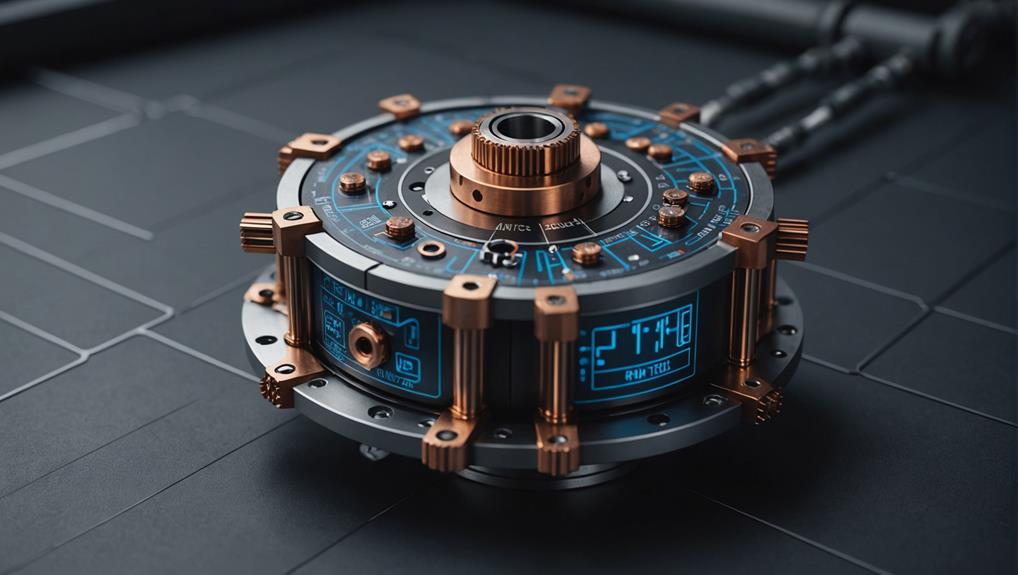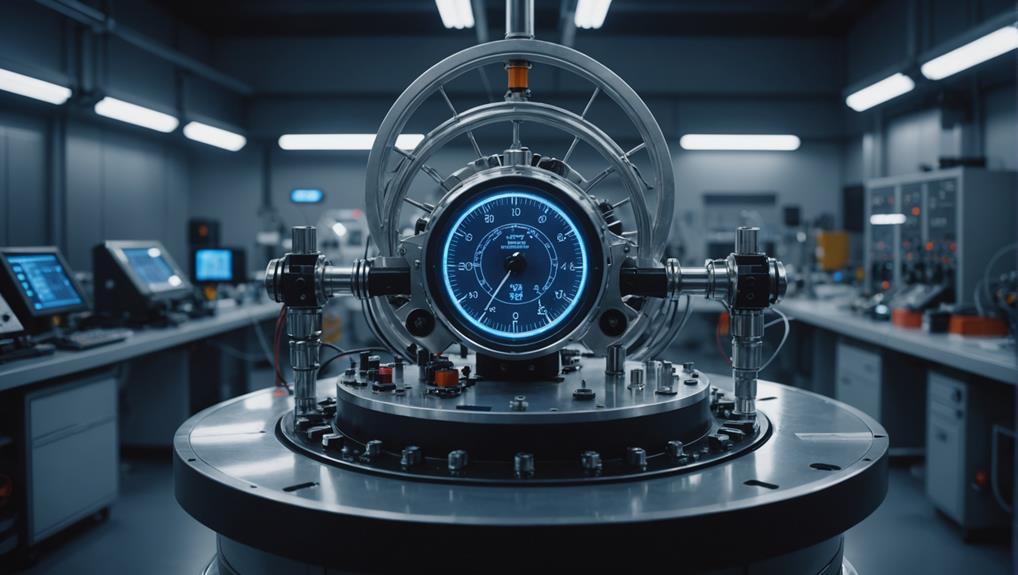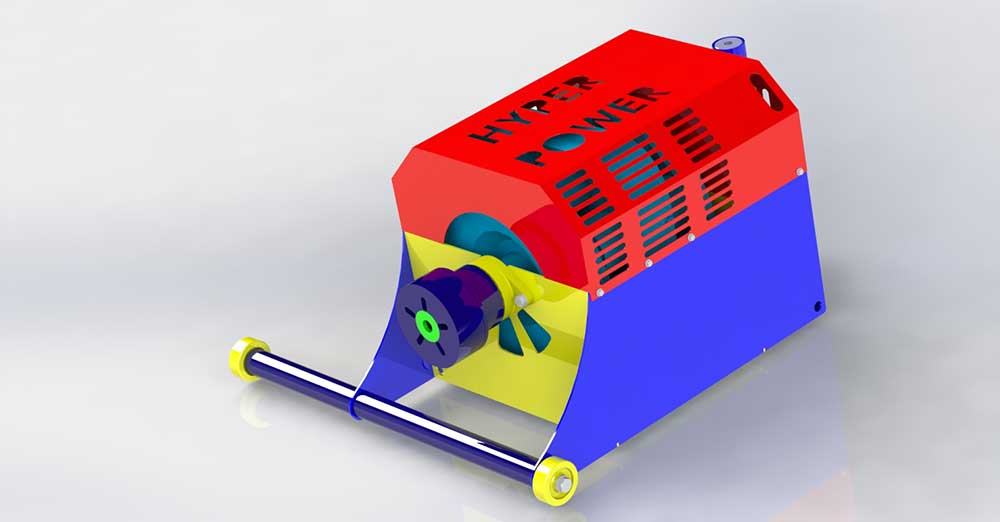
How Dynamometers Enhance Engine Diagnostics and Testing
Necessitating precise measurements, dynamometers unlock the secrets of engine performance, but what else can they reveal about engine diagnostics and testing?
Dynamometers have become an essential tool in today's vehicle testing industry, simulating real-world driving conditions to measure vehicle performance, fuel efficiency, and emissions with precision and accuracy.
These machines enable manufacturers to optimise powertrain performance, validate engine efficiency, and certify compliance with regulatory standards.
In a controlled environment, dynamometers facilitate the detection of potential issues, fine-tuning of engine components, and refinement of products to guarantee a smoother, more efficient, and environmentally compliant ride.
As the industry continues to evolve, the significance of dynamometers will only continue to grow, revealing further insights into the complex world of vehicle testing and development.
As the automotive industry evolves, precise and accurate testing becomes increasingly essential.
Modern automotive testing fundamentals rely heavily on dynamometers, which simulate real-world driving conditions, allowing accurate measurement of vehicle performance, fuel efficiency, and emissions.
Chassis dynamometers, in particular, are vital for testing vehicles under numerous loads, speeds, and environmental conditions, optimising engine performance, transmission, and braking systems.
Engine dyno testing is another pivotal aspect, enabling engineers to isolate and test engine components to improve total engine performance and efficiency.
Dynamometers facilitate the development of alternative fuel vehicles, such as electric and hybrid vehicles, through testing and optimising electric motors, batteries, and powertrains.
Manufacturers can guarantee vehicle safety and compliance with regulatory standards, such as those set by the EPA and NHTSA, through the use of dynamometers.
In the sphere of product development, dyno testing plays a pivotal role in optimizing powertrain performance and validating engine efficiency.
By employing powertrain optimization techniques, engineers can fine-tune engine components to achieve peak performance, while engine performance validation certifies that engines meet stringent standards and regulations.
Through dyno testing, manufacturers can refine their products, guaranteeing a smoother, more efficient, and environmentally compliant ride.
During the product development process, dynamometer testing plays a pivotal role in powertrain optimization, serving as a critical step towards validating that vehicles meet stringent emissions standards and provide a seamless driving experience.
A powertrain dynamometer enables engineers to test different loads and simulate road conditions, identifying areas for improvement. Engine dynos test power output, engine performance, torque, and rotational speed, allowing for precise calibration and fine-tuning.
This controlled environment detects potential issues, such as overheating and sensor malfunctions, and verifies the quality of builds, rebuilds, or repairs. In this environment, original equipment manufacturers (OEMs) can validate that their vehicles meet environmental compliance and standards, reducing the risk of reputational damage.
Powertrain optimization techniques enable businesses to maximize the performance of internal combustion engine (ICE) and electric-powered vehicles and engines, saving time and effort in the process.
Engine performance validation through dyno testing is a pivotal step in product development, allowing engineers to verify the power and torque output of an engine or motor in a controlled environment.
This vital step enables the detection of potential issues early in the development process, reducing the risk of costly rework or recalls down the line. Dyno testing optimises engine performance, improves fuel efficiency, and reduces emissions by simulating multiple load conditions and operating scenarios.
Chassis dynamometers simulate real-world driving conditions, such as hills, valleys, and city traffic, to test engine performance in a more realistic way. Advanced data analytics and IoT integration in modern dyno testing systems enable real-time monitoring and analysis of engine performance, streamlining the development process.
With dynamometers, internal combustion engines can be tested for power generated, torque, and emissions monitoring, providing valuable engine data. Manufacturers can confirm their engines meet performance, efficiency, and emissions standards, ultimately leading to better vehicles for consumers.
Numerous advantages arise from utilising dynamometers, which have become an indispensable tool in the automotive industry.
Original Equipment Manufacturers (OEMs) and engineers can simulate real-life driving conditions, allowing for accurate and reliable engine testing. This enables them to troubleshoot issues in the product development lifecycle, saving time, effort and resources.
Dynamometers play a vital role in ensuring environmental compliance and standards, as they help monitor and verify emission levels and performance metrics. Chassis dynamometers can simulate real-life road conditions, allowing for more accurate testing and analysis of vehicle performance and emissions.
The utilisation of dynamometers can lead to the development of more efficient and sustainable powertrains, reducing the total carbon footprint of the automotive industry.
OEMs can acquire precise engine data from dynamometer tests, which can be used to optimise powertrain components and improve total vehicle performance. Leveraging data acquisition systems, engineers can gather valuable insights, leading to better decision-making and improved product development.
In the pursuit of optimizing engine performance and emissions, comprehending the diverse types of dynamometer testing is vital.
Dynamometers offer a range of testing options, each with its unique benefits and applications.
Engine dyno testing, for instance, assesses the power of an engine in isolation from the vehicle, utilising equipment such as water brakes and alternating currents to test different loads against the engine.
This type of testing provides valuable insights into an engine's performance characteristics, including RPM, torque, and power output.
Chassis dyno testing, conversely, evaluates the force, torque, and rotational speed of an engine or motor in real-time, simulating real-life road conditions and allowing for the measurement of performance metrics.
This type of testing is particularly useful for optimising vehicle performance and can be used to simulate a range of road conditions, including hills, mountains, and city streets.
Vehicle manufacturers and testers can select the most appropriate test method for their specific needs, ensuring accurate and reliable results, by grasping the different types of dynamometer testing.
The importance of emissions testing cannot be overstated, as it enables compliance with emissions regulations, provides valuable insights through emissions data analysis, and ultimately reduces the environmental impact of vehicles and engines.
By ensuring that vehicles meet stringent emissions standards, emissions testing plays a critical role in mitigating air pollution and promoting sustainable transportation.
As the automotive industry continues to evolve, the significance of emissions testing will only continue to grow.
Complying with emissions regulations has become a paramount concern for the automotive industry, as governments worldwide implement stricter standards to offset the environmental impact of vehicles.
The global automotive emission test equipment market is projected to grow at a compound annual growth rate of 5.1% between 2024-2032, highlighting the increasing importance of emissions testing in the vehicle testing industry.
Vehicle and engine emissions tests are essential for businesses to confirm environmental compliance and standards, as non-compliance can result in significant fines and reputational damage.
Dyno testing using dynamometers plays a pivotal role in emissions testing, simulating real-world driving conditions and providing accurate data on emissions, fuel consumption, and vehicle performance.
Chassis dynamometers, in particular, help original equipment manufacturers certify that their vehicles meet stringent emissions regulations, such as the European Union's Euro 7 standards and the United States' Tier 3 standards.
Original equipment manufacturers can create a cleaner, more profitable product, reducing greenhouse gas emissions and promoting sustainable transportation, by utilising dynamometers in emissions testing.
Beyond the obvious need for emissions testing, analysing emissions data plays a pivotal role in the pursuit of sustainable transportation.
Chassis dynamometers enable detailed emissions testing, allowing the collection of valuable data that can be analysed to identify areas of improvement. Integrating data analytics and IoT, chassis dynamometers provide real-time monitoring and analysis of vehicle performance, detecting anomalies and potential emissions issues.
This enables manufacturers to optimise vehicle design, improve fuel efficiency, and promote the adoption of cleaner fuels and technologies. Testing results obtained from dynamometers simulate real-world driving conditions, including weather, road types, and traffic patterns, to investigate the effect of ambient environment on vehicles' performance and emissions.
This data analysis is essential in identifying high-emitting vehicles that need retrofitting or replacement, ultimately reducing emissions issues and promoting a cleaner environment. Manufacturers can make data-driven decisions to improve the cumulative performance of their vehicles, contributing to a more sustainable transportation industry, by leveraging dynamometers in emissions testing.
As the world tackles the challenges of climate change and environmental degradation, reducing the ecological footprint of vehicles has become a pressing priority.
Emissions testing is crucial in this endeavour. Dynamometers play a pivotal role in ensuring environmental compliance and standards, essential for reducing the environmental impact of vehicles and meeting increasingly stringent emissions regulations.
In the pursuit of optimal vehicle performance, engine and chassis dyno testing play a crucial role in evaluating an engine's capabilities.
These testing methods enable automotive test engineers to assess the power, torque, and rotational speed of an engine in isolation or in real-world conditions, respectively. Engine dyno testing utilises water brakes and alternating currents to test different loads against the engine, whereas chassis dyno testing employs fixed roller assemblies to simulate road conditions.
Both testing methods facilitate the collection of crucial engine data on torque, temperature, and more, thereby enabling engineers to optimise engine performance and reduce emissions.
Through simulating diverse driving scenarios, including city and highway driving, chassis dyno testing verifies vehicles meet emissions and performance standards in real-world conditions.
The significance of engine and chassis dyno testing in the vehicle testing industry is underscored, as the global dynamometer market is expected to experience substantial growth.
Dynamometer testing plays a vital role in the product development lifecycle of original equipment manufacturers (OEMs) and technicians, serving as a safeguard to guarantee engines are safe and operational before vehicles hit the road.
It identifies and troubleshoots issues early on, saving time, money, and effort in the long run. This testing method eliminates variables, monitors, verifies, and reports potential issues, ensuring the optimisation of performance metrics for internal combustion engine (ICE) and electric-powered vehicles and engines.
Chassis dynamometer testing simulates real-life road conditions, enabling the assessment of force, torque, and rotational speed of an engine or motor in real-time.
It identifies issues such as overheating, intermittent performance, and sensor problems. OEMs and technicians can choose from a range of dynamometer options, including Eddy Current brake and water brake dynamometers, to find the most suitable testing solution for their specific needs.
Integrating dynamometer testing into their research and development processes enables OEMs and technicians to create cleaner, more profitable products that meet environmental compliance and standards, ensuring vehicles operate smoothly and efficiently on the road.
Five key trends will shape the future of vehicle testing with dynamometers, transforming the way original equipment manufacturers (OEMs) and technicians evaluate and refine their products.
The increasing adoption of electric vehicles drives the need for specialised chassis dynamometers that can accurately test electric drivetrains and battery systems, propelling market growth.
Advanced dynamometer technologies, such as regenerative braking systems, enable energy-efficient testing practices, reducing the cumulative carbon footprint of powertrain testing and supporting environmentally responsible powertrain development.
Integration of data analytics and IoT for real-time monitoring and analysis of vehicle performance becomes a key trend in the chassis dynamometers market.
The market size of chassis dynamometers is expected to reach a significant value, driven by increasing demand for vehicle testing and evaluation.
As the automotive industry continues to evolve, dynamometers will play a vital role in the development of autonomous vehicles, enabling the simulation of complex driving scenarios and facilitating the testing of advanced driver-assistance systems (ADAS) and autonomous driving technologies.
The role of dynamometers in today's vehicle testing industry is crucial. As the industry continues to evolve, Hyper Power recognises that dynamometers will remain vital for ensuring vehicle performance, safety, and environmental sustainability. With their ability to simulate real-world conditions, dynamometers enable accurate testing and validation of vehicles, driving innovation and improvement in the automotive sector. As emissions regulations tighten and electric vehicles gain traction, dynamometers will play an increasingly vital role in shaping the future of vehicle testing. If you have any questions about how Hyper Power can support your vehicle testing needs with our Custom Dyno Solutions, Installation and Setup, Training and Certification, Technical Support and Maintenance, Software Updates and Upgrades, Diagnostics and Performance Analysis, Rental Services, Dynamometer Testing Services, and Accessories and Parts, please do not hesitate to contact us.

Necessitating precise measurements, dynamometers unlock the secrets of engine performance, but what else can they reveal about engine diagnostics and testing?

Navigating the complexities of torque measurement requires a deep understanding of the underlying principles and mechanisms to ensure accurate results.

Precise control and optimization of engine performance await, but only for those who unlock the secrets of dynamometer-driven data analysis.

Gaining insight into the differences between inertia and brake dynamometers is crucial for ensuring accurate testing results in various industries.

Tapping into the precise measurement capabilities of dynamometers, uncover the secrets to optimizing fuel efficiency and slashing emissions in the automotive industry.

Witness the importance of rigorous safety protocols and best practices in dynamometer testing to avoid catastrophic failures and ensure accurate results.

Harnessing the nuances of precision measurement is crucial to avoiding costly errors in dynamometer testing, but what are the key factors to consider?

Witness the transformative power of dynamometers in unlocking your vehicle’s hidden performance potential, but only if you know how to harness their precision.





